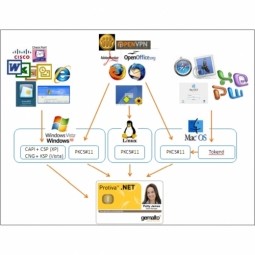Technology Category
- Functional Applications - Inventory Management Systems
- Functional Applications - Warehouse Management Systems (WMS)
Applicable Industries
- Life Sciences
- Telecommunications
Applicable Functions
- Procurement
- Warehouse & Inventory Management
Use Cases
- Demand Planning & Forecasting
- Inventory Management
Services
- Training
About The Customer
SaskTel is a telecommunications company based in Canada, serving 1.4 million customers. Founded in 1908, the company has a rich history of over 100 years and has adapted to the changing needs of its customers over time. SaskTel prides itself on connecting its customers to the people and places they care about, whether through new equipment or high-speed internet. The company operates across multiple departments, including Demand Planning, Finance, Operations, and Procurement. Since 2020, SaskTel has been leveraging analytics to tackle inventory and supply chain challenges, aiming to meet service install timelines and increase customer satisfaction.
The Challenge
SaskTel, a telecommunications company with over 100 years of experience, faced significant challenges in inventory forecasting. The company had been manually forecasting inventory, a process that was both time-consuming and inefficient. Byron Waugh, the Demand Planning and Forecasting Manager, had to manually extract data from SAP for each material number, analyze the history, and input the information into a spreadsheet. This process was not only tedious but also unsustainable given the 3,300+ active material numbers that SaskTel used. The company also faced supply chain issues due to the pandemic, with material lead times extending to 2.5-3 years. Previously, SaskTel would only order materials a few months in advance, leading to frequent rush orders and additional costs.
The Solution
SaskTel turned to Alteryx, an analytics platform, to address its inventory forecasting challenges. After just five weeks of training, Byron was able to build a highly accurate forecasting report using Alteryx. This report has been crucial in managing the extended material lead times during the pandemic. SaskTel now forecasts a minimum of five years to ensure they have the necessary materials when needed. The company has also been working to automate these processes with the help of a business analyst. In addition, SaskTel has started ordering everything they need for the next two years in advance to mitigate supply chain issues. The company is also building reports and dashboards internally, saving both time and money that would have been spent on hiring consultants.
Operational Impact
Quantitative Benefit

Case Study missing?
Start adding your own!
Register with your work email and create a new case study profile for your business.
Related Case Studies.

Case Study
Vodafone Hosted On AWS
Vodafone found that traffic for the applications peak during the four-month period when the international cricket season is at its height in Australia. During the 2011/2012 cricket season, 700,000 consumers downloaded the Cricket Live Australia application. Vodafone needed to be able to meet customer demand, but didn’t want to invest in additional resources that would be underutilized during cricket’s off-season.

Case Study
SKT, Construction of Smart Office Environment
SK T-Tower is the headquarters of SK Telecom. Inside the building, different types of mobile devices, such as laptops, smartphones and tablets, are in use, and with the increase in WLAN traffic and the use of quality multimedia data, the volume of wireless data sees an explosive growth. Users want limitless Internet access in various places in addition to designated areas.

Case Study
Corporate Identity Solution Adds Convenience to Beckman Coulter
Beckman Coulter wanted to implement a single factor solution for physical and remote logical access to corporate network. Bechman Coulter's users were carrying smart card badges for doors, but also needed a one-time password token to access to our corporate network when they were not in the office. They wanted to simplify the process.






